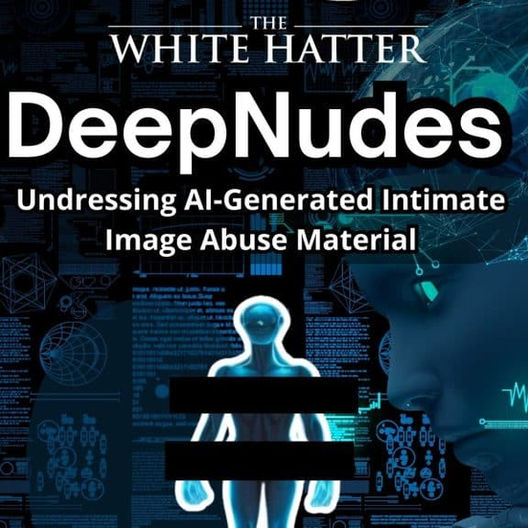How Teens Are Using Technology to Facilitate Digital Relationship Abuse
- The White Hatter

- Jun 26
- 7 min read

CAVEAT : This article builds upon two previous pieces we published on the topic, one in February 2025 (1) , and another in April 2025 (2), in response to a growing number of cases we’ve supported involving teens being digitally monitored, manipulated, or controlled by a romantic partner under the pretence of love. In one such case, a teenage girl was pressured by her boyfriend to keep her Snapchat location sharing (“Snap Maps”) turned on at all times so he could monitor her whereabouts. He claimed it was for her safety because he cared, but his behaviour clearly crossed the line into surveillance and control. Unfortunately, this was not an isolated incident. It is just one example of how digital technologies, when misused in relationships, can become powerful tools of coercion and emotional abuse.
Around the world, data is revealing the same troubling trend. Recently, in Australia, nearly 1 in 5 young people believe that tracking a partner's location is a normal part of a romantic relationship. (3) In Canada, research found that 17.5% of Grade 9 and 10 students reported being victims of some form of digital relationship abuse. (4) In the United States, the Cyberbullying Research Center found that 28% of high school students had experienced a partner misusing digital tools to monitor, control, or harass them. (5) These aren’t just statistics, they are signals that many teens are navigating relationships in digital environments where boundaries are becoming increasingly blurred. With the ubiquitous nature of the Internet and, experiencing violence that transcends physical space has become possible and somewhat common among youth in Canada (6)
Digital relationship abuse is a form of interpersonal violence where one partner uses digital tools like smartphones, apps, social media, or other connected technology, that allows them to monitor, control, pressure, or intimidate the other person in the relationship. Unlike physical or verbal abuse, this form of violence can go unnoticed because it operates invisibly, through screens and silent notifications.
As an example, a teen might be pressured into sharing their phone password or giving their partner unrestricted access to private messages, photos, or even emails. In some relationships, one partner insists the other must keep their location turned on via Snap Maps, Find My iPhone, or apps like Life360, effectively turning the romantic partner into a personal surveillance target. While some teens interpret this as an act of affection or concern, it’s really about power, control, and the erosion of individual privacy in today’s onlife world.
Digital relationship abuse can also include the use of social media to shame or manipulate a partner. Some teens use Instagram Stories, TikToks, or group chats to subtly attack, embarrass, or exert social pressure on their partner. In more extreme cases, we've seen the threat of leaking private or intimate photos, commonly referred to as nudes, that are used as a weapon of control. Now with the rise of generative AI, deepfakes, and image editing tools, some teens are even digitally doctoring content to further harass or humiliate their partners.
Technology is embedded and has become ubiquitous in modern relationships, especially for teens. It’s how they connect, share experiences, express affection, and even define their romantic lives. However, these tools also enable a constant presence, one that can be misused to blur the line between care and control. In the past, teens may have expressed jealousy through repeated calls or passive-aggressive notes. Today, that jealousy manifests in more covert and persistent ways, through apps that track movements, pressure for constant updates, or expectations of immediate response to texts or calls.
A teen might think, “They’re just worried about me” or “They love me so much, they always want to know where I am.” However, what seems like devotion can quickly evolve into a form of digital surveillance and control. As one teen girl we supported explained, her boyfriend asked to see her Snap Map location because he “missed her.” But, when she visited a friend and didn’t tell him, he accused her of lying and cheating. What began as caring relationship turned into controlling one, all through a cellphone.
At The White Hatter, we’ve spoken to countless teens who described unhealthy digital behaviours in their relationships without realizing they were experiencing abuse. One young woman told us that her boyfriend insisted she send selfies at various times of the day to “prove” she wasn’t with someone else. Another teen was required to respond to texts within minutes, or face accusations of ignoring or disrespecting her partner.
In some cases, teens are manipulated into believing that their partner’s constant monitoring is normal or even necessary. “If you love me, you’ll let me see your phone,” or “Only people with something to hide turn off their location,” are phrases we’ve heard repeatedly. These aren’t signs of trust, they’re red flags.
What's especially concerning is that these behaviours are often normalized by social media culture. Popular TikTok trends that joke about “stalking your boyfriend’s Snap location” or “checking his likes” may seem harmless, but they reinforce ideas that surveillance is a standard part of a relationship. They contribute to a growing cultural narrative that jealousy equals love and that control equals commitment. These are dangerous messages, especially for young people who are still learning what a healthy relationship looks like.
Parents and caregivers play a vital role in helping teens recognize and resist digital relationship abuse, but it starts with education and open dialogue.
It’s crucial to talk about healthy digital boundaries long before your child is in a relationship. Ask them questions like, “Do you think it’s okay for someone you’re dating to track your location?” or “Should a partner have access to your private messages?” These conversations help your teen reflect on autonomy and respect and understand that caring or love does not require access to their digital life.
It’s important to label these behaviours for what they are, a form of abusive control. Teens may not see the harm if there’s no yelling, no hitting, no visible bruises. However, being pressured to send selfies on demand, to leave read receipts on, or to keep Snap Maps active 24/7 are all forms of digital control. Helping your teen name these actions empowers them to recognize when something is wrong.
Just as vital is your own modelling of healthy digital behaviour. Teens observe how their parents and caregivers use tech in their relationships. If they see one parent constantly checking up on the other, sharing passwords out of suspicion, or demanding immediate responses, they might internalize those behaviours as normal. Instead, model trust, respect, and privacy in your digital interactions, and be intentional about how you discuss them.
You can also use teachable moments to open up dialogue. A viral TikTok video, a scene in a teen drama, or a story in the news can prompt questions like, “What would you do in that situation?” or “Do you think that behaviour is okay?” These conversations can lead to valuable reflection, without feeling like a lecture.
If your teen comes to you about an unhealthy digital relationship, resist the urge to overreact or punish them. The fear of losing their phone or being banned from social media can silence them. Instead, listen. Validate their feelings. Let them know they’re not alone and that you're there to support them, not to control them. Let the consequence be the abuser's behaviour, not their own decision to speak up.
Digital relationship abuse can be subtle, silent, and insidious. It doesn’t always announce itself with bruises or shouting, but it can deeply harm a teen’s mental health, sense of self, and future relationships. In a world where connection is increasingly digital, we need to recognize that abuse has gone online too.
More importantly, we must teach our teens that real relationships honours boundaries, respects privacy, and thrives on trust, consent, and not control. A healthy relationship isn’t measured by how many apps you share access to or how many times a day you check in. Rather, it’s measured by freedom, equality, and mutual respect.
As technology becomes an inseparable part of how teens connect, express affection, and build romantic bonds, we must confront an uncomfortable truth, the very tools meant to enhance connection, are also being used to erode autonomy. What we once called jealousy now masquerades as “care.” What used to be stalking now gets rebranded as “checking in.” What looks like love, in many of these cases, is control that is enabled by apps, screens, and a culture that too often normalizes surveillance in relationships.
The rise of digital relationship abuse isn’t just a trend, it’s a cultural novel blind spot. We are witnessing a generation of young people navigating relationships in a world where privacy is often mistaken for secrecy, and control is confused with commitment. As the examples shared in this article highlight, from teens being forced to keep Snap Maps active, to being guilted into sending constant check-in messages, this form of coercion may not leave physical marks, but it can absolutely leaves emotional scars.
The most troubling part? Many teens don’t even realize it’s happening.
That’s why the responsibility lies with us parents, caregivers, and educators, to open their eyes before it's too late. We must equip them with the tools and language to recognize digital relationship abuse when they see it or experience it. It begins with honest, non-judgmental conversations about consent, boundaries, and the difference between healthy curiosity and harmful control. It continues with us modelling the behaviours we hope to see, and being the trusted adults they know they can turn to without fear of losing their freedom.
When a teen tells you they’re being pressured to share their phone, their passwords, their location, believe them. When they don’t tell you, stay present enough in their onlife world to recognize the subtle cues of distress. Teach them that trust cannot be demanded, it must be earned and mutually upheld. Teach them that love should never feel like surveillance. Teach them that a healthy relationship, whether offline or online, is one where they are free to be themselves where they are unwatched, not pressured, and unafraid.
At The White Hatter, we believe digital literacy isn’t just about knowing how technology works, it’s about knowing how to use it with empathy, consent, boundaries, intention, and respect. Teens deserve to grow into relationships that uplift, not diminish, their sense of self. By empowering youth with these truths, and by supporting families through education rooted in evidence, not fear, we can help shift the narrative from one of control to one of true connection.
Let’s raise a generation that understands that a healthy relationship protects your heart, and not just your passcode.
We remain committed to empowering youth and families through evidence-based digital literacy education and on online safety, privacy, and respectful digital citizenship. Let’s help teens recognize what a healthy relationship looks like, and what it doesn’t, in today’s onlife world
Digital Food For Thought
The White Hatter
Facts Not Fear, Facts Not Emotions, Enlighten Not Frighten, Know Tech Not No Tech
References:














